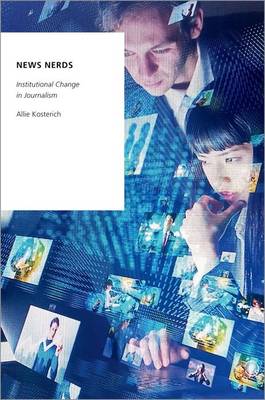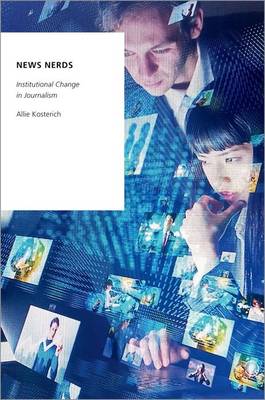
- Retrait gratuit dans votre magasin Club
- 7.000.000 titres dans notre catalogue
- Payer en toute sécurité
- Toujours un magasin près de chez vous
- Retrait gratuit dans votre magasin Club
- 7.000.0000 titres dans notre catalogue
- Payer en toute sécurité
- Toujours un magasin près de chez vous
Description
The content of news has not changed much over the last century--politicians, celebrities, wars, crime, and sports dominate past and present headlines. Yet, the ways in which journalists both gather and disseminate information have been turned on their head. Gone are the days of editors assigning stories to writers, who then research, inquire, and present what they found in a compelling yet accurate fashion. Today's journalists are coding, programming, running analytics, and developing apps. These "news nerds" are industry professionals working in jobs at the intersection of traditional journalism and technologically intensive positions that were once largely separate. Consequently, news nerds have changed the institutionalized view of journalism, which now accounts for these professionals. News Nerds explores how technological, economic, and societal changes are impacting the institutionalized profession of journalism. Allie Kosterich draws on a mixed-methods research design that blends interviews, social network analysis of LinkedIn data, job postings, and industry publications to make sense of how skills and practices become entrenched throughout the news industry. Taken together, these data reveal the ways in which the profession is evolving to incorporate new technological skillsets and new routines of production. In telling these stories and sharing these findings, Kosterich directly confronts what happens when new skillsets and new ways of understanding and producing news start to collide with the old routines of journalism. News Nerds introduces the notion of institutional augmentation--a process of institutional change that is not restricted to the expected binary outcome of the reinstitutionalization of something new or failure as a fleeting fad. Instead, as in the case of news nerds and journalism, there exists an alternative possibility in the coexistence of supplementary institutions. News Nerds provides a timely and relevant analysis of contemporary journalism and a model for understanding how industries react to the emergence of new career trajectories and new categories of employment.
Spécifications
Parties prenantes
- Auteur(s) :
- Editeur:
Contenu
- Nombre de pages :
- 192
- Langue:
- Anglais
- Collection :
Caractéristiques
- EAN:
- 9780197500361
- Date de parution :
- 28-10-22
- Format:
- Livre broché
- Format numérique:
- Trade paperback (VS)
- Dimensions :
- 157 mm x 232 mm
- Poids :
- 263 g

Les avis
Nous publions uniquement les avis qui respectent les conditions requises. Consultez nos conditions pour les avis.






